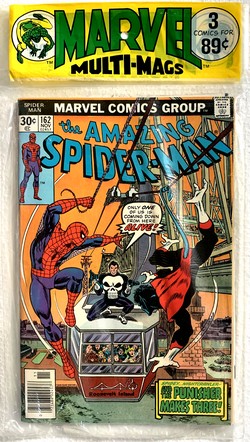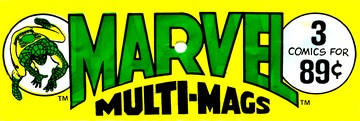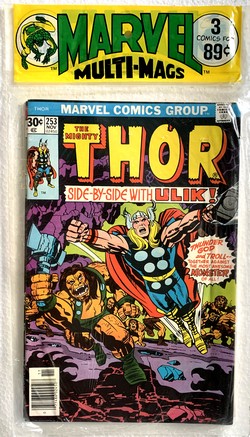 |
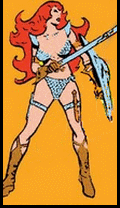 |
|
SPIDER-MAN,
RED SONJA & THOR
BACK
TO BACK IN A
NOVEMBER
1976 MARVEL MULTI-MAGS
|
|
|
|
| |
|
| |
|
| |
|
| |
MARVEL
MULTI-MAGS |
|
Even in the early
1960s, the comic book industry
realized that in spite of the
hugely successful comeback of the
superhero genre (which had been
clinically dead for most of the
1950s) and the subsequent streak
of new creativity and enthusiasm
it generated, its traditional
sales points were fading away.
Small stores that had carried
comic books were pushed out of
business by larger stores and
supermarkets, and newsagents
started to view the low
cover prices and therefore tiny
profit margins comics had to
offer as a
nuisance. Many ideas on how
to turn these developments around
were put forward by different
publishers, but the most
successful concepts strived to
open up new sales opportunities
and markets and thus tap into a
new customer base.
|
|
|
|
| |
| One place these potential
buyers could be found was the growing number of
supermarkets and chain stores. But in order to be able to
sell comic books at supermarkets, the product would have
to be adjusted. |
| |
| Handling
individual issues clearly was no option for these
outlets, but by looking at their logistics and
display characteristics, DC Comics (who came up
with the Comicpac concept in 1961) found
that the answer to breaking into this promising
new market was to simply package several comic
books together in a transparent plastic bag. This
resulted in a higher price per unit on sale,
which made the whole business of stocking them
much more worthwhile for the seller. The simple
packaging was also rather nifty because it
clearly showed the items were new and untouched,
while at the same time blending in with most
other goods sold at supermarkets which were also
conveniently packaged. |
|
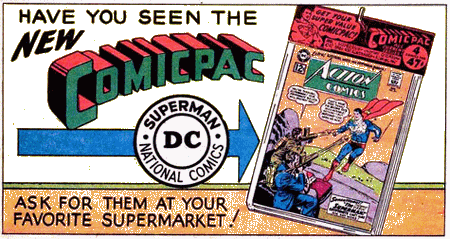 |
|
| |
| Outlets were even supplied with dedicated Comicpac
racks, which enhanced the product appeal even more since
the bags containing the comic books could be displayed
on rack hooks in an orderly and neat fashion. |
| |
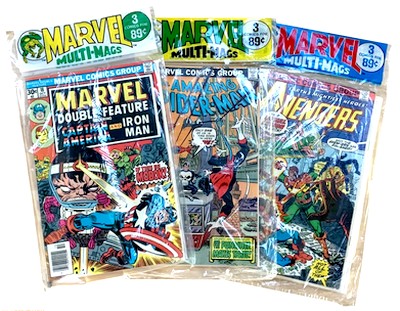
|
|
DC's
"comicpacks" were a success -
so much so that other publishers quickly
started to copy it. Marvel produced a
series of Marvel Multi-Mags in
1968/69 but then seems to have dropped
the idea again. However, by the
mid-1970s, the House of Ideas had
once again fully embraced the marketing
concept of selling multiple comic books
packaged in a sealed plastic bag to a
customer base which comic books could
hardly reach otherwise: people shopping
at supermarkets and large grocery stores.
It didn't really matter therefore that
buying these three comic books in a
comicpack for say 89¢ (rather than from
a newsagent for 90¢
in that case)
clearly presented no real bargain - it
was the opportunity and convenience to
pick up a few comics at the same time
parents and adults did their general
shopping. Neatly packaged, it almost
became an entirely different class of
commodity.
|
|
|
| |
|
| |
| The MARVEL MULTI-MAGS we are
looking at here features Amazing Spider-Man #162,
Marvel Feature #7, and Thor #253, all
from the November 1976 cover date run. This meant that
they were actually on sale at newsagents in August 1976,
although there could be quite a delay in terms of actual
availability of MARVEL MULTI-MAGS
at some sales points, resulting in Multi-Mags on display
that contained "semi-recent books (typically
about nine months old)" (Brevoort, 2007).
Considering the packaging and distribution process, this
doesn't really seem too surprising. There is no general rule as to what
shape/grade the comic books in a MARVEL MULTI-MAGS (or any other comic pack for that
matter) will be in; after all, a lot of things can go
wrong during their 40+ years of storage. Some of these
potential mishaps will only affect the plastic bag. This
specific example however has an exceptionally clean
polybag which also kept the comic books inside in
excellent condition.
|
| |
| No titles had
permanent slots in the MARVEL MULTI-MAGS, however, both Amazing Spider-Man and Thor
would show up in a reliably regular way. Marvel
Feature, one of many "tryout titles", on
the other hand, was only included a couple of times -
which is hardly surprising given it only ran for seven
issues. But even with the fairly regular titles (other
examples were Hulk, Avengers and Fantastic
Four) there was never any guarantee of an
uninterrupted flow of consecutive issues - and therefore
a distinct possibility of missing out on a part of the
storyline. On top of this, the continuity of the Marvel
Universe of the 1970s was such that plots and storylines
usually evolved over more than one issue. This didn't exactly make the MULTI-MAGS an ideal way of getting your
Marvel comic book fix. However,
one needs to bear in mind that this was a common fate of
the average comic book reader in the 1970s Bronze Age,
whether his or her comic books came packaged in a plastic
bag or as single issues from a display or spinner rack.
Back in those days, an uninterrupted supply of specific
titles was, quite simply, not guaranteed. Not worrying
too much about possible gaps in storylines thus became
something of a routine - besides, you would usually get a
recap of "what happened so far" on the first
page.
So all in all it simply was a
part of being a comic book fan in the 1970s - as were the
monthly Bullpen Bulletins (which were the responsibility
of the editor-in-chief) and the in-house advertising
(often with mouth watering cover reproductions).
|
| |
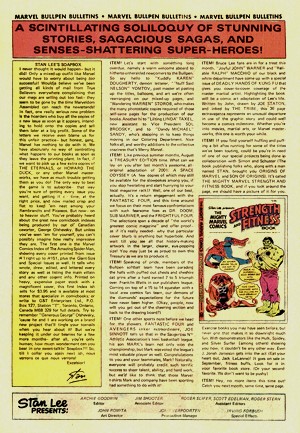 |
|
| In November 1976, the
Bullpen Bulletin was still on its way
through the alphabet as far as its title
was concerned, arriving at the letter S -
which resulted in the typically
alliterative and somewhat nonsensical
title "A Scintillating Soliloquy
of Stunning Stories, Sagacious Sagas, and
Senses-Shattering Super-Heroes!". The
headline item of Stan Lee's Soapbox
column was the kind of story that makes
you wonder (these days, not back then)
how much actual fact it contained. Were
hoarders really buying "all the
copies of a new issue as soon as it
appears (...) and sell them later at a
big profit", or were "True
Believers everywhere (...) complaining
that our mags are selling out too
fast" related more to a
distribution problem? Whatever it was, it
certainly allowed Stan Lee to throw in a
plug for Marvel's subscription offerings
- which also happened to be the subject
of a full-page in-house ad.
|
|
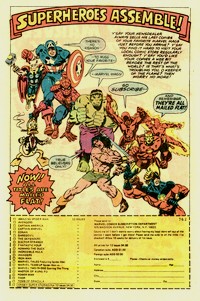
In-house ad from Thor #253
|
As for the actual Bullpen
Bulletins' various ITEM! bullet points,
they were - as usual - mostly concerned with
staffers new and old, plugs for upcoming Treasury
Editions, and a push for another collaboration
with Simon & Schuster (albeit a slightly
oddball one in the form of The Mighty Marvel
Comics Strength & Fitness Book).
|
|
| |
Marvel was selling its brand and properties left,
right, and centre, and doing comparatively well
(certainly in comparison to their main competitor, DC
Comics). Sales of comic books were up, dipping only
slightly during the second half of the year - but still
in overall positive territory compared to 1975, whereas
DC's numbers were only going one way, and that was down
(Tolworthy, 2016). But the bottom line would be that "running
a comic book company was no cake walk in 1976",
as Joe Brancatelli famously put it in one of his monthly
columns for Warren in 1977.
"Whatever improvements were made at Marvel
[in 1976] came by virtue of the fact that they raised
comic prices, made additional non-comic sales (...),
cut printing costs by lowering the print runs and
subsequently had less books returned unsold since
less were printed in the first place. (...) The
company decided to print less comics in 1976 rather
than trying to sell more." (Brancatelli, 1977)
The fact that "our mags are selling out too
fast" may thus have been caused more by a
curbed supply rather than a surging demand (which no
doubt is what readers inferred from Stan Lee's
statement).
|
| |
| |
|
| |
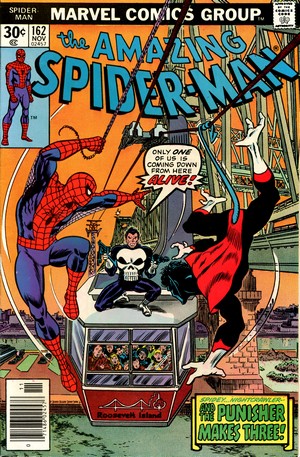
|
|
AMAZING
SPIDER-MAN #162
November 1976
(monthly)
On Sale:
10 August 1976
Editor
-Len Wein
Cover - Ross Andru (pencils) & John
Romita (inks)
"Let the Punisher fit
the Crime!" (18 pages)
Story
- Len Wein
Pencils - Ross Andru
Inks - Mike Esposito
Lettering - John Costanza
Colouring - Glynis Oliver
STORY
OVERVIEW
- (continued from
previous issue) The Punisher
tracks down Spider-Man and Nightcrawler,
believing that one of the heroes framed
him as the Coney Island sniper. After an
all-out brawl, the Punisher and
Spider-Man agree to team-up to uncover
the truth behind the shootings, and they
succeed in revealing the true identity of
the gunman, who turns out to be the
villain Jigsaw, seeking revenge for the
fact that the Punisher caused his facial
disfigurement.
|
|
|
| |
On a side line, J. Jonah Jameson is seeking to
have yet another go at a Spider-Slayer by meeting
scientist Marla Madison.
|
| |
| As
a teenage reader of Marvel comic books back in
the 1970s it was fairly easy to be completely
oblivious to the context that was at times
driving individual issues - the only thing you
had and focussed on was the comic book you were
holding in your hands. Amazing Spider-Man #162
and its previous issue were perfect examples for
this.
On the surface of
things, this was simply a story which involved
another superhero (Nightcrawler) and an anti-hero
vigilante (Punisher) which teamed up to fight a
villain together - after they had started out
with the usual confrontational misunderstanding
regarding their motives and stances.
It felt very much like
the formulaic plotting of an issue of
Spider-Man's Marvel Team-Up - a title
writer Len Wein had previously penned for sixteen
consecutive issues (#12-27) in 1973 and 1974. And
now it almost seemed as though he was revisiting
that storytelling device as editor/writer of Amazing
Spider-Man, a title he had been penning
since issue #151 (December 1975) - but that's not
what was happening here.
|
|
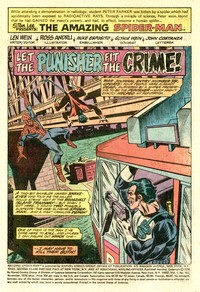 |
|
| |
| In spite of curtailed print
runs and other attempts of cutting production costs,
Marvel was still in expansion mode in 1977, and one way
to do this was through spin-offs. |
| |

LenWein
(1948-2017)
|
|
Len Wein
had relaunched the "all-new,
all-different" X-Men in collaboration with
artist Dave Cockrum in Giant-Size X-Men
#1 (May 1975), and the new characters found their
footing in the regular monthly title under writer
Chris Claremont.
Having
one of those increasingly popular new X-Men make
a guest appearance in Amazing Spider-Man
was thus not done on a whim - it was quite simply
an effective way to heighten visibility
and promote the newly-revived series (Brevoort,
2021). After having Nightcrawler around for two
issues, "Love-A-Plug" Len Wein then has
him disappear into thin air in order "to
continue his adventures in the all-new X-Men mag
on sale everywhere".
|
|
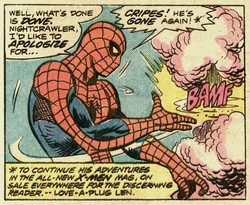 |
|
| |
| It was something Marvel's editors loved to do every
now and then in the 1970s, and in this case Wein must
have thought that the only thing better than a plug for
one character or title was to have two of them.
The
Punisher was instantly popular with readers after his
debut in Amazing Spider-Man #129 (February 1974),
but the restrictions imposed by the Comics Code made it
very difficult to fully exploit the potential of the
character. Plans to have him headline his own series in
one of the black & white magazines (which weren't
subject to the Comics Code) faltered after only one
appearance each in Marvel Preview #2 (August
1975) and Marvel Super Action #11 (January
1976), so Marvel decided to simply put the Punisher on a
tour of (repeat) guest appearances in titles such as
Amazing
Spider-Man, Power Man, Captain America and
Daredevil, waiting for the plug to work (which
it ultimately did in the mid-1980s when the Punisher
really took off).
|
| |
| Ross Andru (born
Rossolav Andruskevitch) has been called "the
most under-appreciated Spider-Man
artist" (Avila, 2020), which to a
degree is true since he lives in the
historical shadows of Steve Ditko, John
Romita and Gil Kane.
To many fans, however, he
is the definitive Webcrawler artist of
the Bronze Age.
"Andru's
crisp line art in Marvel's flagship
comic was (...) iconic. His
Spider-Man was lithe and muscular.
His Peter Parker kept the good looks
John Romita Sr. had given him after
he replaced Steve Ditko. Spidey's
supporting cast, the best in comics
at the time, all looked great under
Andru's pencil, especially Mary Jane
Watson."
(Avia, 2020)
Andru established himself as the go-to
Spidey artist for an almost uninterrupted
run on Amazing Spider-Man
#125–185 (missing only five issues)
as well as Giant-Size Amazing
Spider-Man #1–5, spanning an
incredible five year period from October
1973 to October 1978.
|
|
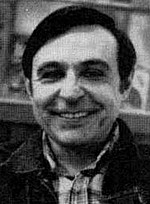
Ross
Andru
(1927-1993)
|
|
|
| |
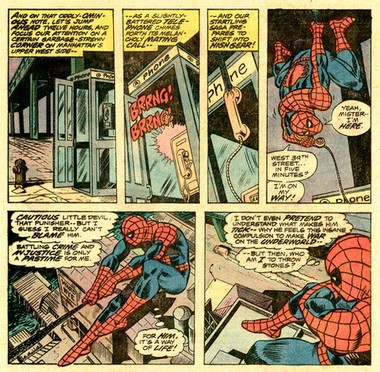 |
|
Spider-Man
writer and editor Gerry Conway noted that Andru's
greatest strength was his authentic approach to
visual storytelling:
"Ross Andru could place a
character anywhere he wanted. He had a
terrific sense of spatial relations; he could
track a battle easily across rooftops, from
panel to panel. He drew some great sequences
where he maintained the same stationary
background, a rooftop or a street, across an
entire page, but move the characters from
panel to panel (...) it was extremely
important to Ross. He used to go around New
York City taking pictures of the buildings so
he could be accurate about where he put
Spider-Man." (Conway in Williams,
2010)
Amazing Spider-Man
#162 features a number of "classic"
Ross Andru storytelling compositions, and they
provide the story with a sense of direction which
the plot itself lacks a little bit too often.
Reviews of this issue vary, ranging from
"entertaining" to
"contrived", but it seems fair to say
it's not a highlight of the series - which
doesn't prevent this and the previous issue
demanding higher than average prices these days,
simply due to the Punisher's appearance.
|
|
| |
| |
 |
|
There is no
letters page in this issue. The
entire issue is narrated by the
Punisher in his "war
journal" style, and in a
subplot features
the first appearance of Marla
Madison, scientist co-conspirator
against Spider-Man and eventual
love interest for J. Jonah
Jameson.
|
|
|
|
| |
| |
|
| |
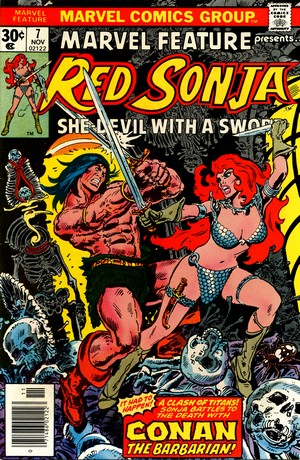
|
|
MARVEL
FEATURE #7
November 1976
(bi-monthly)
On Sale:
10 August 1976
Editor -Roy
Thomas
Cover - Frank Thorne (pencils
& inks)
"The Battle of the
Barbarians" (17
pages)
Story - Roy
Thomas
Pencils, Inks & Lettering -
Frank Thorne
Colouring - Hugh Paley
FINAL ISSUE
Story continued from Conan
the Barbarian #67
Continues in Conan the
Barbarian #68
STORY
OVERVIEW
- Red
Sonja delivers a stolen page from
the Book of Skelos to Karanthes,
but Conan has tracked her there
and wants the page for himself.
|
|
|
|
| |
Red Sonja, "She-Devil with
a sword", was created by Roy Thomas as a response to
the growing popularity of Marvel's excursion into the
sword and sorcery genre.
"Conan the Barbarian was (finally)
selling fairly well, after a somewhat shaky start, so
I felt the time was finally right to introduce a
roughly equivalent female hero into the series, with
an eye toward 'expanding the franchise'."
(Thomas, 2014)
As a result, Red Sonja
first appeared in Conan
#23 (February 1973),
loosely based on a Robert E. Howard character named Red
Sonya
|
| |
| However, since that persona
featured in a story revolving around the 16th century siege of
Vienna by the Turks (which meant that there were
plenty of swords involved, but no sorcery),
Thomas made substantial changes in order to bring
the character into Marvel's sword and sorcery
world of Conan the Barbarian. Alongside
of these, Thomas also made one rather subtle
change - the spelling of her name.
"I decided I needed a new heroine
- one I could do anything with, because there
were no prose stories in the Conan paperbacks
that would conflict with what I might have
her do (...) I believe I felt that, if she
were to be a possibly continuing character in
Conan, it might be best to make her a bit
more of a "new" character by
changing the spelling of her name, ever so
slightly." (Thomas, 2014)
|
|
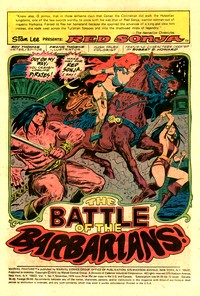 |
|
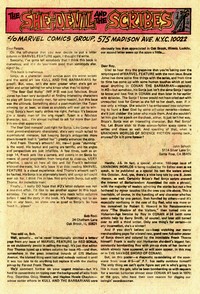 |
|
| |
| Red Sonja's next appearances were in
Savage Tales
#3
(February 1974), Savage Sword of Conan #1 (August
1974), Conan #43-44 and 48 (October 1974, November
1974 and February 1975) and Kull And The Barbarians
#2-3 (May and September 1975). Her popularity with
readers was beginning to get real traction, and she became the billed character
in the first issue of a second volume of the tryout title
Marvel Feature, in November 1975 (the first
volume having been published between December 1971 and
November 1973, covering 12 issues and serving as a
launchpad for the Defenders, Ant-Man, and the Thing's
Two-In-One team-up formula).
|
| |
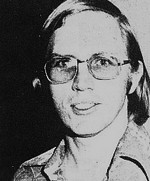
Roy
Thomas
|
|
"For months Stan [Lee] and I had
talked about putting out a mag exclusively
about Red Sonja. We'd had literally hundreds
of requests over the past couple of years,
and thought she might be worth a
several-issue tryout." (Thomas,
1975)
The plans for Red Sonja kept changing back and
forth, from a number of tryout issues to just a
single one (mostly for production capacity
reasons) and then back again to several issues of
Marvel Feature (Thomas, 1975). The
visuals of Red Sonja, however, had been
established and set in stone very early on, and
are essentially defined by two character traits -
her "chainmail bikini" and the
eponymous colour of her hair.
"I wanted her to be a redhead,
primarily to make her different in one more
visual way from [black-haired pirate queen]
Belit and [blonde mercenary] Valeria."
(Thomas, 2014)
|
|
| |
| Red Sonja had so far had a revolving door situation
concerning artists, including Barry Smith, Esteban Maroto
(who had originally designed Red Sonja's skimpy
"metal bikini"), Neal Adams, Ernie Chan and
John Buscema, but for her start in Marvel Feature,
Marvel was looking for a more stable situation. |
| |
The suggestion either by Marv
Wolfman or Archie Goodwin to hire Frank Thorne
for the job met with Thomas's approval (Thomas, 2014). A long time
professional in the field, Thorne had never
before worked for Marvel but seemed almost
destined to pencil and ink Red Sonja.
"I
LOVE drawing women."
(Frank
Thorne in Stroud, 2019)
But even though editors had all the best of
intentions, the first issue of Marvel Feature
with Red Sonja was drawn by Dick Giordano, and
Frank Thorne only came on board as of Marvel
Feature #2.
From that point on, however, Thorne took over
as artist and remained Red Sonja’s artist
through the remaining six issues of Marvel
Feature and eleven issues of her subsequent
own title Red Sonja, before John Buscema
took over the artwork as of Red Sonja #12
(November 1978) up until the final issue #15
(March 1979), with his brother Sal filling in for
issue #14.
|
|

Frank
Thorne
(1930-2021)
|
|
| |
| During his time on the title, Thorne often did it
all: pencils, inks, colours and lettering, as well as the
complete cover art. While this arrangement wasn't unique,
it was a highly unusual way of putting together a comic
book at Marvel in the 1970s. More commonly, several
individuals would contribute their distinct skills. As
a result, Frank Thorne became associated with the
character of Red Sonja like only very few other artists
at Marvel with other characters - and ultimately also in
a very singular way outside the actual comic books.
"Thorne clearly relished Red Sonja; his
association with the title went beyond a job and
became part of his identity. There was also a
performative aspect - Thorne would show up at
conventions dressed in a wizard costume, accompanied
by a model or few (calling themselves “The
Hyborean Players”) wearing the famous scale-mail
bikini of Red Sonja." (Robertson, 2021)
|
| |
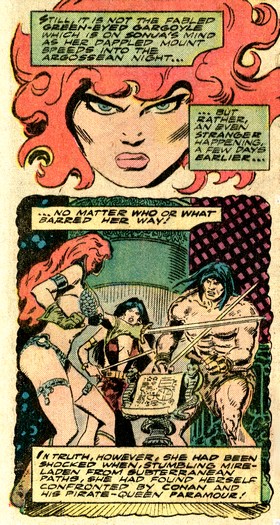
Marvel
Feature #7
|
|
To DC Comics
editor and historian Paul Levitz,
Thorne was "probably the
first working mainstream artist
to revel in cosplay"
(Levitz, 2021), and it may well
be that this kind of
appropriation lead Stan Lee to
state, albeit in his usual joking
way, in late 1977 that
"...
the fantastic popularity of
both Sonja and Thorne is
almost a cause for concern.
So busy is Frank attending
mushrooming
"SonjaCons"
throughout the country,
lecturing to burgeoning Sonja
fan clubs, judging Sonja
beauty contests, and
designing Sonja games,
T-shirts and record albums,
that it's hard to know where
he finds the time to draw the
strips." (Lee,
1977)
Today, Frank Thorne (who
passed away in 2021) is the
undisputed definitive Red Sonja
artist, but the letterpages along
with some editorial statements at
the time of publication paint a
more complex picture, with
readers either loving or hating
his artwork (Imes, 2022).
But regardless of tastes, Red Sonja would
be Thorne's one and only Marvel
assignment - not that much of a
surprise though, since he didn't
like superheroes (Stroud, 2019).

Marvel Feature #7
was, as mentioned, the last issue
of this tryout title. Two months
later, Red Sonja #1
would hit the newsstands, but the
story presented in this last
issue of Marvel Feature would
not be continued in Red Sonja's
own title since "The Battle of the
Barbarians" was
the second of three parts, the
beginning and the ending of that
story appearing in Conan the
Barbarian #67 and #68.
|
|
|
|
| |
| Such crossovers were not uncommon at the time, often
undertaken to boost a title or character, but it seems
odd that Marvel Feature #7 would be chosen for
this rather than Red Sonja #1. |
| |
| |
 |
|
All things
considered, Red Sonja would seem
a slightly risqué
choice for Marvel's Multi-Mags,
but to date six issues featuring
the She-Devil are known to have
been included - two issues of Marvel
Feature (#5 and #7) and four
of Red Sonja (#3, #6, #9
and #11). |
|
|
|
| |
| |
|
| |
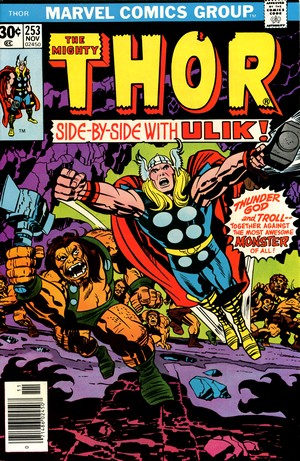
|
|
THOR #253
November 1976
(monthly)
On Sale:
10 August 1976
Editor - Len Wein
Cover - Jack Kirby (pencils)
& John Verpoorten (inks)
"Chaos
in the Kingdom of Trolls"
(13 pages)
Story
- Len Wein
Pencils - John Buscema
(breakdowns), Tony DeZuniga
(finished art)
Inks - Tony DeZuniga
Lettering -
Pat Condoy,
Gaspar Saladino (splashpage)
Colouring - Marie Severin
"The
Weapon and the Warrior!"
(5 pages)
Story
- David Kraft
Pencils & Inks - Pablo Marcos
Lettering -
Irv Watanabe
Colouring - Glynis Wein
STORY
OVERVIEW
- Thor
and Ulik join forces and banish
the evil Trogg back to a
dimension accidentally opened up
by the Trolls. In "Tales of
Asgard", Thor learns to
value his own skill and strength
rather than just relying on his
hammer.
|
|
|
|
| |
| In 1976, the two eminent artists
of Thor's first 14 years of publication history
would each contribute to that year's issues: Jack
Kirby would draw most of the year's run covers,
and John Buscema would do most of the interior
art. "Big" John Buscema took up the
artwork for the God of Thunder right after Jack
Kirby left Marvel for DC in June 1970. At that
time, Stan Lee was still writing the title, and
Buscema became the regular artist as of Thor
#182 (November 1970).
During the second part of 1976, however,
Buscema - facing an excruciating workload - would
only do breakdowns and leave the finishing of the
artwork to whoever was inking the pencils - in
the case of Thor #253 this job was left
to Tony De Zuniga.
Thor #253 also features the second
part of the "Tales of Asgard" segment.
Following mostly negative feedback from readers,
the plans for reviving this feature were dropped
after this issue.
|
|
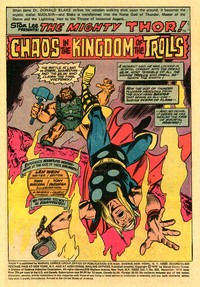 |
|
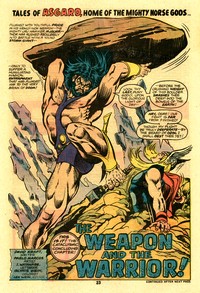 |
|
| |
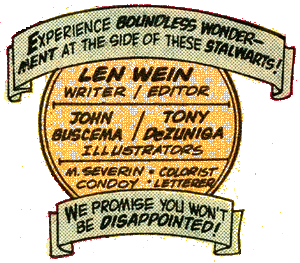
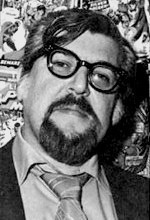 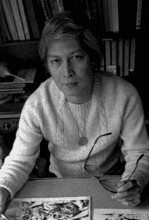
John
Buscema
(1927-2002)
Tony De Zuniga (1932-2012)
|
|
There were more
parallel lines between Kirby and Buscema, as Stan
Lee himself pointed out.
"John Buscema was one of the
greatest illustrators in comics. He brought a
great sense of majesty and power to his
illustrations. He also, like the great Jack
Kirby, was a masterful storyteller in
pictures." (Stan Lee in Walker,
2011)
Len Wein, the regular author of the Thor
stories of this particular period, also had
nothing but praise for Buscema (who clearly was
one of Marvel's biggest assets at the time).
"The
legendary Jack 'King' Kirby had introduced
the magnificent scope and majesty of fabled
Asgard, but John [Buscema] added a power and
grace that was uniquely his own. John had a
way of understanding characters that was
positively supernatural in its depth." (Wein,
2016)
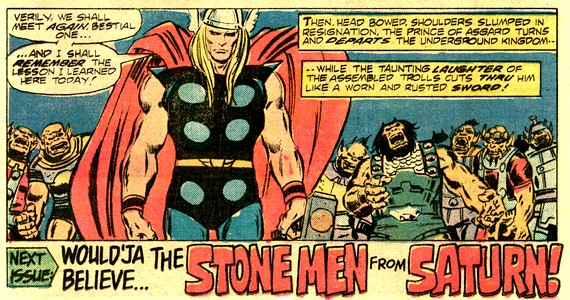
|
|
| |
| Antony de Zuñiga
was the first Filipino comic
book artist whose work, under the name of Tony De Zuniga,
found approval with American comic book publishers in the
late 1960s and who subsequently opened the door for many
of his countrymen to enter the business. De Zuniga is best known for his work
at DC; at Marvel he started out as an inker in the
mid-1970s, where he would often embellish Buscema's work
on Conan and Thor - and, as in the case
of Thor #248-253, providing the finished art
over breakdowns by Buscema. The latter's schedule was so
busy that De Zuiniga did the complete pencils and inks
for Thor #255 (January 1977).
When De Zuniga passed away in
2012, Marvel Comics praised him as "a historic
figure in comics, a singular voice of his own
making" (Beard, 2012).
|
| |
| |
 |
|
There is no
letters page in this issue.
Regular
buyers of MARVEL MULTI-MAGS at the
time were, with a little bit of
luck, able to continuously read
the adventures of the Thundergod;
both the previous (Thor
#252) and
the following (Thor
#254) issues were packaged into
MARVEL
MULTI-MAGS.
Although the
cover for Thor
#253 can easily be recognized as
Jack Kirby's work, Thor's
face was reworked by John Romita
& John Verpoorten according
to the Grand
Comics Database.
|
|
|
|
| |
| |
|
| |
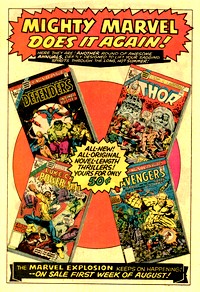
In-House ad
from Thor #253
|
|
|
|
| |
|
| |
BIBLIOGRAPHY
| |
| |
| AVILA Mike
(2020) "Remembering Ross Andru, the most under-appreciated
Spider-Man artist", Syfy Wire, published
online
BEARD
Jim (2012) "Marvel remembers Tony De
Zuniga",
Marvel.com, originally published online 18
May 2012 (accessible through the Internet
Archive)
BRANCATELLI
Joe (1977) "The Comic Books",
in Creepy #92 (October 1977)
BREVOORT
Tom (2007) "Marvel Multi-Mags", Blah Blah
Blog, originally published online 28 April
2007, reposted 18 April 2020
BREVOORT
Tom (2021) "BHOC: Amazing Spider-Man
#162",
The Tom Brevoort Experience Blog,
published online 3 April 2021
IMES
Rob (2022) "A double-edged Sword:
Roy Thomas, Frank Thorne and Red Sonja", History in
the Making - Rob Imes Blogspot, published
online 19 January 2022
LEE
Stan (1977) "She-Devil with a Sword!",
in The Superhero Women, Simon and
Schuster
LEVITZ
Paul (2021) "Bidding farewell to
Frank Thorne...", Facebook, posted 7
March 2021
ROBERTSON
Josh (2021) "Frank
Thorne, ‘Red Sonja’ Artist, 1930-2021", Heavy Metal,
published online 9 March 2021
STROUD
Bryan (2019) "An
Interview With Frank Thorne - Red Sonja Artist
& Wizard at Large", Nerd Team 30, published
online 20 March 2019
THOMAS
Roy (1975) "Of Swords and She-Devils", in Marvel
Feature #1, November 1975 (cover date)
THOMAS
Roy (2014) "A fond look back at Big
Red", in The Adventures of Red Sonja Volume
1, Dynamite Entertainment
TOLWORTHY
Chris (2016) "Marvel
and DC sales figures",
published
online at zak-site.com
WALKER
Karen (2011) "The Old Order Changeth!
Thor in the Early Bronze Age", in Back Issue
#53, Twomorrows
WEIN Len (2016)
"Introduction", Marvel Masterworks:
Thor, Vol. 15
WILLIAMS
Scott E. (2010) "Gerry Conway
interview: Everything but the Gwen Stacy
Sink", in Back Issue #44,
Twomorrows
|
|
| |
| |
|
| |
| |
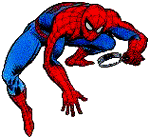

(c) 2022
uploaded
to the web 22 May 2022
|
| |
|
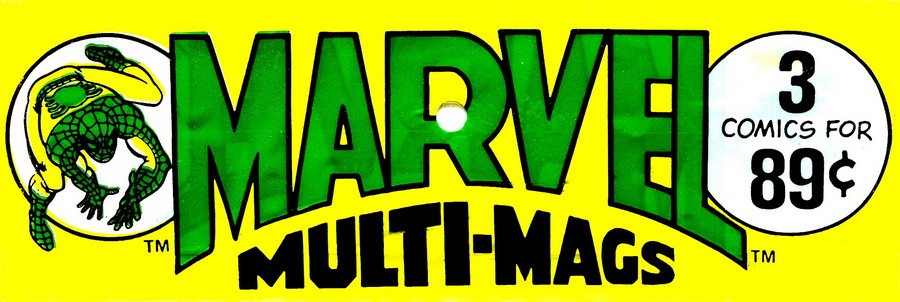 |
|


